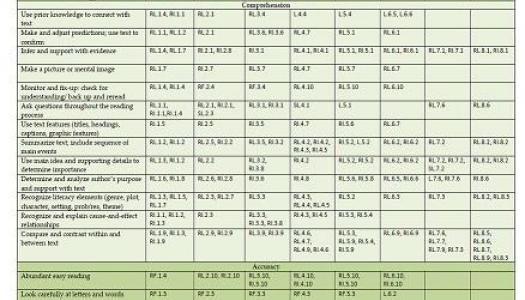A Flexible Menu to Fit Your Needs

Join Our Community
Access this resource now. Get up to three resources every month for free.
Choose from thousands of articles, lessons, guides, videos, and printables.
Why a CAFE Menu? The Background
The CAFE Menu grew out of an effort to find a way to make reading strategies visible, because learning should be seen, accessible, and obvious, not assumed. The menu is a sensible way to organize strategies while giving students a blueprint on which to anchor their learning. The acronym CAFE begins with C for Comprehension, because without comprehension you aren’t reading, followed with an A for Accuracy, which encompasses phonics and phonemic awareness. The F represents Fluency, and the E rounds things out with Expand Vocabulary to emphasize ways in which we continually learn new words through reading. This acronym is posted at the top of the menu, because the letters stand for the four main goals students work on to improve reading achievement. Any reading strategy should fit into one of these four main goals.
42 Strategies
There are hundreds of reading strategies—way too many for students to remember and apply in their reading. We focus on a condensed list of 42 strategies gathered from various state as well as national standards and backed by research. This list encompasses most of the skills and strategies readers need when comprehending text, reading accurately and fluently, and understanding vocabulary. However, it is not inclusive of all literacy standards and therefore cannot be used exclusively as a guide to proficiency. The strategies provided should serve as a springboard for your instruction, and the resources at the Daily CAFE are there to help support it.
Personalizing the CAFE Menu
Although the 42 strategies provided meet a large majority of standards and will move your students forward in their reading, you may wish to go deeper and personalize the menu to the grade-level standards your students must learn. This is why we have a fillable CAFE Menu (download below). Here is how to make this work for you:
- Grab a copy of your grade-level literacy standards, four different-color highlighters, a copy of the full CAFE Menu, and a copy of the fillable CAFE Menu.
- Looking at your grade-level standards, choose a color to represent the goal of comprehension, and highlight any standard that would fit under the comprehension heading of the CAFE Menu. Then, select a color to represent the goal of accuracy and highlight any standard that would fit under the accuracy standard of the CAFE Menu. Do the same with the remaining two goals.
- Compare your standards with the current CAFE Menu. What strategies are included, and what needs to be added or changed?
- For example, CCSS.ELA-LITERACY.RL.4.6 is Compare and contrast the point of view from which different stories are narrated, including the difference between first- and third-person narrations. The CAFE Menu strategy is Compare and contrast within and between text. You can determine if you want to keep it as is on the CAFE Menu or change it to Compare and contrast point of view.
- Continue to do this with each of the four goals, and you will have a personalized CAFE Menu representative of your grade-level requirements. Keep in mind, not all standards are reading strategies, and therefore not all will have a place on the CAFE Menu. As you are sorting through them, you may wish to use the added-notes sheet to document which standards still need to be met. Most of these will fall under the speaking and listening, writing, and language standards.
- When it is time for instruction, we use the supporting Ready Reference Guide to help us communicate the strategy, why we need the strategy, and the secret to success. There is a Ready Reference Guide for each of the 42 strategies on the CAFE Menu. And, if you have added or changed a strategy, you may wish to create your own Ready Reference Guide to use when you teach it.
We know there isn’t one program that will meet the needs of all learners. The CAFE Menu provides 42 generalized, commonly used strategies that are aimed at helping readers of all ages and levels. Taking it a step further by personalizing the menu to align with your specific students and standards can help you know it more deeply so your instruction meets the depth and level your students need.





